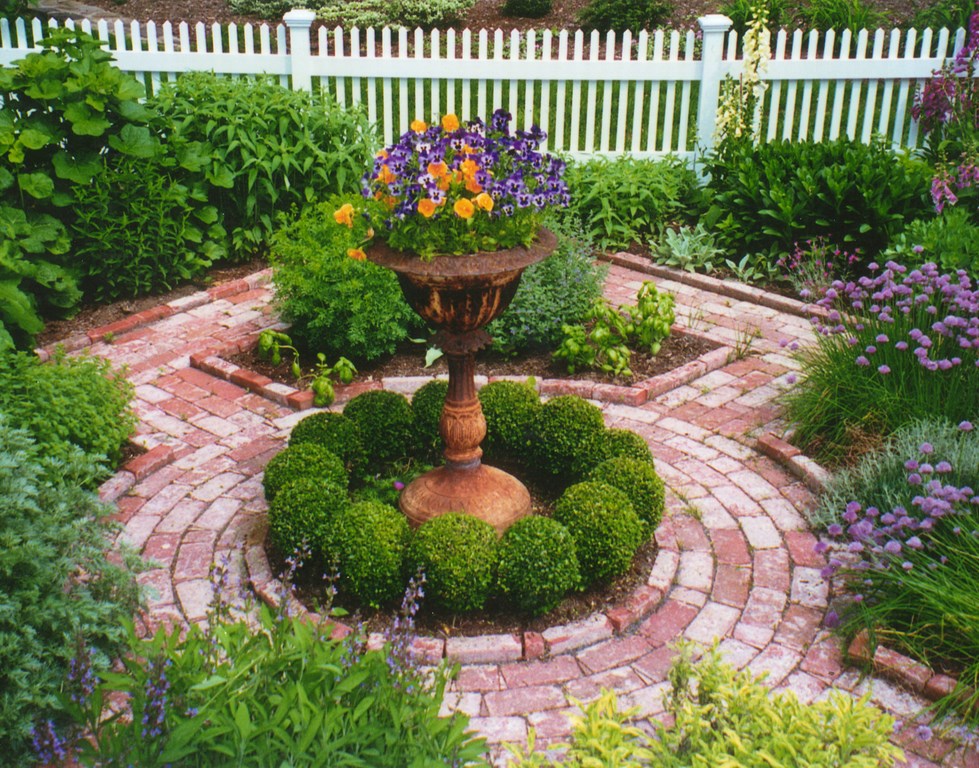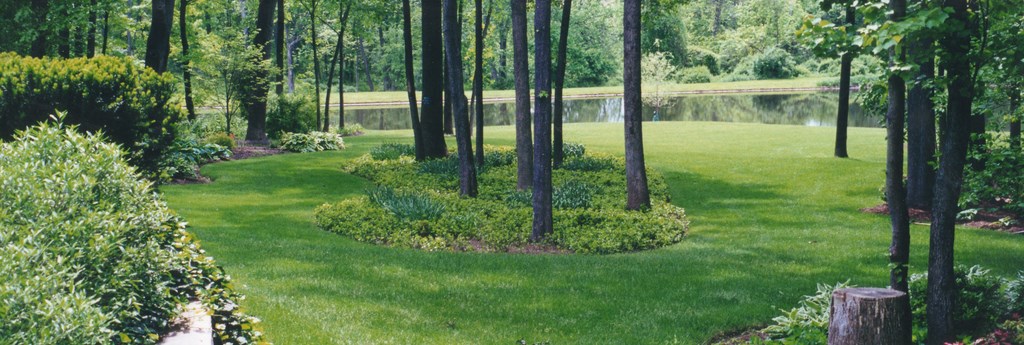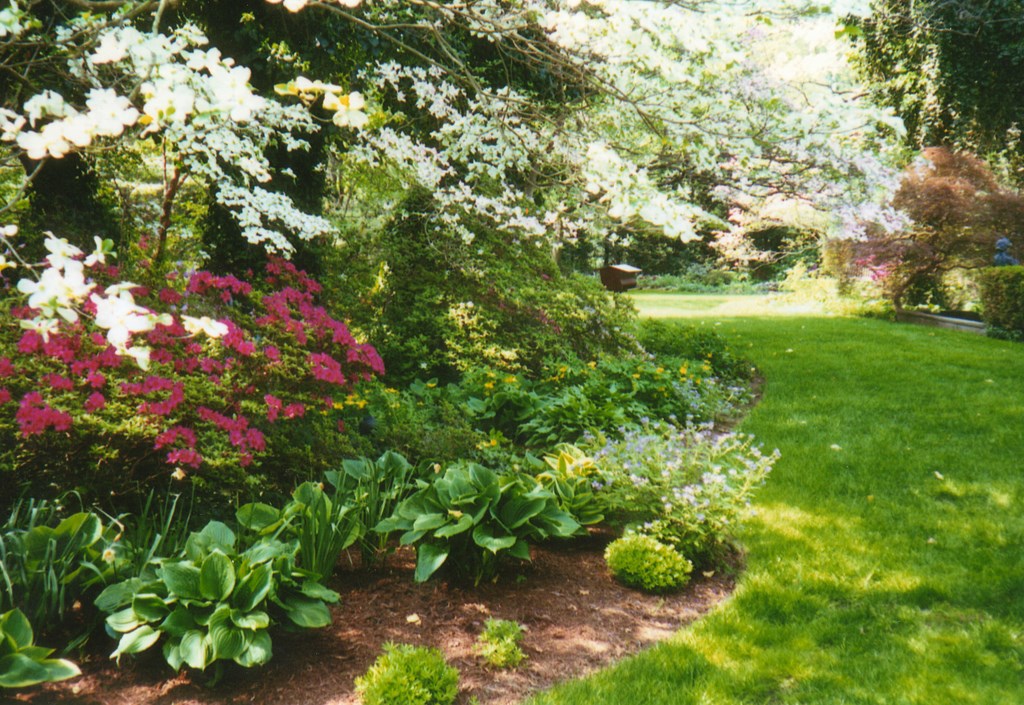Workable Gardens

It’s a plain fact: Few designers weigh maintenance as heavily as other elements of a design when creating gardens for their clients.
Most will routinely ask whether the client wants a low-maintenance environment or one that requires a little more work and may yield a greater abundance of flowers or other desirable features, but the consideration typically ends there. And this is so despite the fact that by leaving maintenance out at the design level, landshapers often doom themselves to creating settings that turn out to be ongoing sources of frustration for themselves and their clients.
I like to refer to a design that is created with maintenance in mind as a “workable landscape,” because the words carry the sense that a garden is dynamic and that I or my client can live within the scope of what I’ve created without either of us breaking a back (or the bank) to achieve ongoing, beautiful visuals.
BASIC WORKABILITY
To me, creating workable gardens is simply about anticipating the maintenance needs associated with the plants that make up the design.
What this implies is that designers must be educated, and I’m not talking about taking some courses or getting a degree in horticulture: Instead, what I’m bringing up here is first-hand, real-world experience in actually installing and taking long-term responsibility for a garden’s upkeep.
It can be your own backyard, but ideally designers should get much more real-world experience than that: You can be extremely well versed in the plants and hardscape materials you use, but without hands-on knowledge of installation and care, you will never know what it takes to implement a design on the physical and psychological levels.
The only way get this experience is to be involved at every stage of implementation of your designs so you know everything involved in helping them thrive and succeed. In my view, this recognition of how much effort, time and skill is needed to install and maintain a landscape significantly improves the design process.
| Even though these two gardens have a wild aspect, their natural looks and planned workability are perfectly suited to the clients’ low-maintenance attitudes. In one case, some simple pruning and deadheading will allow this garden to go through its natural life cycle in a care-free way (left), while in the other, en masse plantings in large drifts remove all the complexity from maintenance scheduling (right). |
In other words, a designer’s understanding of the maintenance needs of each element, whether it’s the pruning schedule for a shrub or familiarity with how often a wood fence will need staining, becomes crucial to the overall design.
In today’s market, the selection of materials may present a daunting task when it comes to knowing all attributes and maintenance needs, but I’ve simplified things by categorizing maintenance in the same way I do trees as being either drought or moisture tolerant: By filing these items according to maintenance needs, I end up organizing my palettes according to how much maintenance the client is willing to accept.
For those of us who have clients who want their property looking pristine no matter the cost, selling maintenance services (either your own or those of a favored contractor) can be easy. But most clients read their bills, scrutinize time spent and consider every detail because they don’t understand the necessity of certain line items and don’t want to feel (or be) ripped off. These clients are a harder sell on maintenance and usually ask for low-maintenance landscapes – or, on the negative side, roll through the entire process with unrealistic expectations that will never be met.
UP TO SPEED
Naturally, educating clients about the nature of, need for and costs associated with maintenance is part of the workable-garden process.
One way to do so involves showing them pictures of landscapes (not necessarily your own designs) and attaching your estimates of what you think maintenance will cost in the course of a year. This way, clients come to understand just how much they are willing to do themselves or have done for them and at what cost. Be careful here: You don’t want to back yourself into a corner, so make sure clients know you’re only estimating these costs. Being honest, clear and up front in these situations goes a long way toward avoiding later misunderstandings.
| The use of groundcover over large areas that would otherwise be mulched can save considerable maintenance time as well as money in this case – and adding bulbs over the course of several years will lend color and visual interest to the scene. |
As a rule, the lowest numbers will be tied to landscapes with the most en masse plantings and groundcovers. If you compare the cost of planting a hundred-square-foot area with Vinca, for example, as opposed to mulching the area every year, your client may be surprised to see that the groundcover will pay for itself over the course of only a few years.
Moreover, groundcovers such as Vinca and Liriope can take a fair amount of tramping – favorites of mine to place in areas in which their neighbors (such as yew and boxwood hedges) will require heavy, regular pruning. By contrast, planting annuals or perennials en masse next to hedges is never a good idea, as all too often they will bloom at just the time the hedges need pruning.
The point is, every workable garden has a need for routine maintenance that should be considered and addressed during the design process. In addition, information on maintenance issues should always be conveyed to clients to make them fully aware of what it will take to maintain the various types of gardens they may be commissioning.
Perhaps I take it to extremes, but I even develop a maintenance schedule as part of the design process. As I see it, this is a tool that helps me think about the design in terms of year-round interest in addition to being a tool for use by clients and maintenance contractors going forward. In very practical terms, these maintenance schedules are a professional way to inform customers of the need for upkeep and educate them about the products they are purchasing. This is a point that should be made early in the design/build process, as it shows the client you are looking toward the future.
SPREADING THE MESSAGE
I push things in this direction in the firm belief that gardens can be designed solely around maintenance schedules – and very successfully.
Any properly designed garden should have year-round interest, for example, but a “maintenance first” design in which areas are devoted to plants that need to be either pruned, dead-headed or cut back simultaneously can save on maintenance time and cost. By keeping an eye on upkeep in this way, we can create year-round gardens with distinct maintenance schedules that will optimize and maximize the work to be done at each contractor visit.
Beyond planning, any properly designed workable garden also requires steady communication between the designer and those who do the installing. This give-and-take can prove invaluable in defining and refining approaches to maintenance issues and in making certain design intent is on everyone’s mind as the garden is installed.
As has been suggested here, selling a design is one thing, but selling a client on maintenance is another. They too must understand the needs of their landscape, and it’s the designer’s job to make them aware of the level of upkeep needed to maintain the integrity of the design. Without this level of communication, we set ourselves up for failure and can turn what might have been a successful design into a general nightmare.
With that in mind, everyone needs to be clear on the “look” of the design. This means establishing guidelines for mature heights and plant sizes as part of the plan, with notes included on whether they should be pruned tightly or allowed to grow with a more natural, wilder appearance. And all this needs to be defined before installation and then revisited during and after completion.
| Scroll gardens may look like a lot of work, but they actually only require two clippings a year and have a clean look that makes them seem high maintenance when they’re not (left). Interspersing them with colorful, easily maintained potted perennials will break any sense of chromatic monotony (middle) – and a dusting of snow reveals their year-round potential (right). |
For those clients who ask for low- or no-maintenance gardens, one must stress the importance of planting and setting up schedules accordingly. Proper planning, planting and scheduling can save your clients big time and demonstrates that you’re keeping their best interests in mind.
For high-maintenance gardens, planning and scheduling are doubly important when it comes to saving time and money. Maintenance visits can be costly, and regularly scheduled visits can add up over the year. Without the proper planning, a once-manageable garden can quickly turn into a wild and untamed beast – a devolution that ultimately leads to a garden reclamation that will probably be more expensive than the original installation.
Along these lines, I’ve developed “design statements” or “design intents” which explain exactly what the design is trying to accomplish. If clients are unwilling to perform the necessary tasks or pay to have them performed, then we can all agree early on – that is, before any installation work has been done – that it will be wasteful to install the designed landscape and that another approach will be needed.
EDUCATING EVERYONE
Once my work is done, the educated clients I leave behind are well positioned to help the contractor maintain the landscape. Clients who use and understand their landscapes, for example, are often the first to see where something has gone wrong – a capacity that can save everyone headaches.
After all, clients who notice soggy spots in their lawns or the holes of burrowing pests can be among your best employees: They are involved to such an extent that they will be less upset than would be the case if the problems went unrecognized until it was too late. And maintaining this spirit of open communication is important as well for those who are doing the maintenance work: They need to keep the clients up to date on what they’re doing and why.
| There’s real value in thinking through layering and combing plants with care. This workable woodland garden, for example, is coordinated for spring blooms, with bulbs hidden from view by new growth from hostas. Moreover, these trees and shrubs that can all be pruned in one maintenance visit after their blooms are spent. |
One key area in which keeping clients informed can be helpful is in explaining that bills for maintenance can vary greatly from year to year. They need to know that pruning, for instance, will vary somewhat in cost each year because many times more or less work might be required. This is why it’s important to address maintenance concerns not only through the design and install stages but also at the beginning of each season.
Work crews need educating and information as well. Crew chiefs may not need degrees in horticulture, but they should have a good working knowledge coupled with a reasonable track record and experience.
It’s also crucial for maintenance companies to recognize the importance of their workers by supporting them with continuing education and certifications that instill a sense that their work is valued and valuable. It always happens: When crew members feel more involved, they begin to know their properties inside and out.
Crew cohesion is important, too. A foreman and crew together will develop a sense of pride and see properties as “their work.” To make this work, however, foremen must be well rounded and able to troubleshoot just about anything. And in those cases where they can’t fix the problem, they should at least be able to recognize when there is a problem and seek out the help they need.
Foremen also need to be kept up to speed not only on the goals of each maintenance visit but also on overall goals for the property. This way, less time will be wasted on questions about what needs to be done and how it needs to be done and they will avoid those awkward moments when a client approaches and they have no idea of what they’re talking about. Portable client files can be very helpful in this respect.
BRINGING IT ALL TOGETHER
As is the case in most fields of professional endeavor, education and communication are invaluable when it comes to creating workable gardens. All those involved in their creation, installation and maintenance must be well informed of the goals for the site and up to speed when it comes to specific details associated with establishing and maintaining beautiful gardens.
| There’s nothing in a maintenance-first design approach that banishes high-maintenance options from consideration: It’s all about whether the client is willing to do the work or pay to have it done. Vegetable gardens, for example, typically involve high maintenance, but the results can be glorious (left) – and it’s possible to include other attention-demanding plants in these designated high-maintenance areas. Other gardens are simply high-maintenance by design (right), in which case the clients should be ready (as were these) to sign bi-weekly maintenance contracts. |
In my case, I’ve operated from a maintenance-first design perspective for so long that it’s second nature to me. Each and every time I get it right, my clients are happier, the installers I work with are happier and, most of all, the maintenance contractors I work with are much happier, because they know exactly what’s expected and have control over what it takes to be successful in working with the gardens I design.
It may not be the usual approach, but for designers and contractors alike, keeping schedules and recording details on every task to be performed helps the entire process along. In fact, creating and maintaining workable gardens is easy when you allow these details to be shared with everyone involved in the landscape and keep everyone focused on the same goals.
Ryan Dawson is a designer for Leydon Landscaping in Bucks County, Pa. He received a degree in horticulture from Virginia Tech and is currently working on certification by APLD under company owners Lisa Leydon and Chris Potts. After working in the landscape maintenance industry for more than eight years and spending time in South America working on a Hydrangea farm, Ryan joined Leydon Landscaping – a company known for its beautifully maintained gardens – as a means of implementing more of his own design ideas. The company has trained horticulturalists on staff and takes a horticultural-based approach to design and maintenance.



















